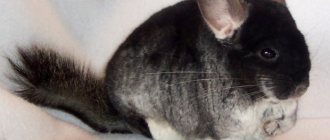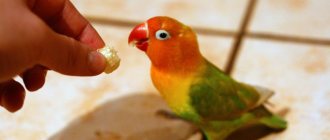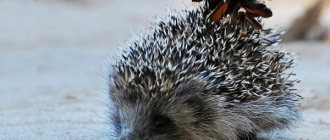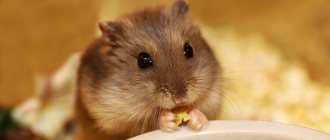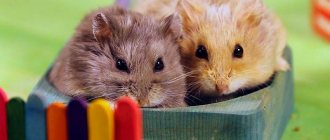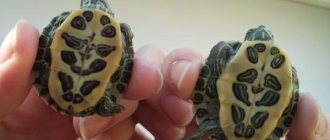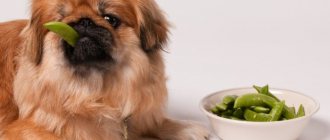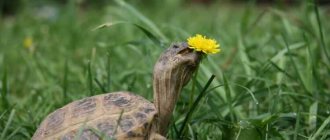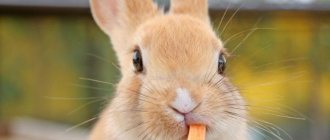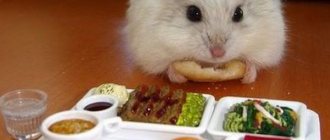Diseases
Usually, at home, hedgehogs can get injured at home, so the owner must closely monitor his pet, which he lets out for a walk around the apartment.
If the temperature regime is not observed or there are drafts, the hedgehog may catch a cold.
If you eat improperly, problems associated with the gastrointestinal tract may develop: constipation, diarrhea, bloating. With a lack of vitamins, vitamin deficiency may develop.
Hedgehogs may have parasites: ticks, fleas, worms; an experienced veterinarian can tell you how to deal with them. Allergic reactions to cleaning products, food, and even cage litter are possible. Hedgehogs and even African hedgehogs are carriers of rabies. But a hedgehog can only become infected with rabies through interaction with another infected animal.
Lifespan
Before you get yourself a new “neighbor,” it is very important to find out everything about him, including how long pygmy hedgehogs live. Of course, in the wild, hedgehogs have to fight for their existence, get their own food and look for wintering places; at home, this is impossible, as a result of which the life expectancy of individuals, of course, increases.
With proper and regular care, African hedgehogs can live for quite a long time, varying from 5 to 7 years, but there are cases where such pets have lived for ten years.
The main thing in keeping it is to feed your pet properly and provide it with a comfortable place to live, as well as monitor its health, and contact a veterinarian if necessary.
Character and lifestyle
The domestic African hedgehog, regardless of what species it originally belongs to, adapts to the general home structure and routine in its lifestyle, but the pet’s character still directly corresponds to its species.
That is, for example, no matter how much food there is in the bowl, and no matter how stubbornly the night light is left on in the evenings, the white-bellied hedgehog will still go hunting after sunset. This must be taken into account, because even if such an animal is locked in a cage for the night, it will “fight” with the bars until the morning and will do this very noisily.
South Africans will never play with children; moreover, if the child’s attention is too intrusive, they can bite him. This species also does not tolerate noisy large families; in such apartments the hedgehog will look for somewhere to hide, refuse food and, in general, will not bring joy to its owners, but complete disappointment. But for a lonely person, this species is the best company; it sleeps constantly, is always in one place, loves to eat and does not make noise.
Keeping an African hedgehog of the Algerian variety is absolutely no different from keeping a cat, to which these animals are similar in character. Such a hedgehog, for example, may well choose its owner’s legs for its sleep or lie down next to it.
Moreover, for this species the change of night and day is not at all important; they very easily adapt to any lifestyle and diet, except for isolating themselves in cages.
Somalis are most similar in behavior and character to guinea pigs. But, like many hedgehogs, they do not like to be locked up. This species will not come to sleep on the next pillow, but it will not hunt at night either.
However, it will definitely go around all the “possessions” several times a day, snorting and stomping at the same time. Somalis are the only “Africans”. Who will stubbornly stock up food supplies in their “house”, so before feeding the pet, finding an empty bowl. You need to check where the previous portion of food migrated - to the stomach or to the “bedroom”.
The dwarf species has the most docile and simple character of all, it can sit in a cage during the day while all the people are at work, in principle, it will simply sleep through these hours.
However, in the evenings the hedgehog turns into a “companion” and must be “freed”, picked up, played with, scratched on the tummy with a brush, and so on. There is no point in forcing your pet into a cage; the hedgehog will return there on its own by morning, the main thing is that it has access to its “home.”
All species of these pets do not need a “family” of their own kind at all, but can live in pairs, if there is a spacious enclosure or open country conditions.
African females are always larger than males by 1-2 cm and heavier by 70-100 grams. Externally, the coloring of females is in no way inferior to the colors of males, and gender does not affect the character of the animal in any way.
Description
African pygmy hedgehogs were artificially bred specifically for human consumption. These hedgehogs look very cute, they are not at all dangerous , they weigh about 500 g and are about 20 cm in length. They differ from each other mainly in color. Their needles, unlike forest species, are softer, which is undoubtedly a big plus.
Pygmy hedgehogs are very friendly and quickly get used to living with a family. They do not hibernate, do not have an unpleasant pungent odor and do not disturb their owners at night, since their lifestyle is completely different from wild individuals of this species.
It is not necessary to keep the animals in pairs, since they feel great alone, the main thing is to surround the pet with care.
Let's take a closer look at their color varieties.
- Dwarf gray individuals have black eyes and nose; they may have dark spots on their belly and legs. The needles are soft, dark gray or brown, usually on the back and in the ear area they have a gradating color from gray to black.
- Brown individuals have lighter needles, dark eyes, may have a dim edging, and a chocolate-colored nose. The skin is pale pink with a grayish undertone.
- Chocolate-colored pygmy hedgehogs have bright brown needles, black eyes, and a soft brown nose. Such individuals look especially attractive and cute. This species sometimes has characteristic dark spots on its abdomen and paws.
- There is also a “champagne” variety; the color of the needles of such individuals is usually gray-brown or light beige, the nose is pink, and the eyes may have a ruby color.
- There are also cinnamon-colored hedgehogs that have milky beige needles.
- When choosing a pet, we recommend paying attention to the common “salt and pepper” color. Hedgehogs are almost black, but the color also includes less pigmented needles. The skin around the ears and on the back of such individuals is usually dark.
Often, pygmy hedgehogs are born albinos, that is, they have completely white spines, a soft pink nose and bright scarlet eyes. And there are also just white hedgehogs that are not albino; their spines are almost all discolored.
Of course, breeders of pygmy hedgehogs often experiment, resulting in original and even unique colors.
What foods should I give?
Hedgehogs living in their natural environment obtain earthworms, mosquito larvae, dragonflies, and chafers.
All of this food can be purchased at a pet store, but many animal lovers raise worms and larvae at home. In separate terrariums they contain Zofobas, bloodworms, Uzbek or Madagascar cockroaches.
It is recommended to give insects not only to adults, but also to small hedgehogs. Adult animals receive worms, cockroaches and beetles in live or immobilized form. The young insects are dried, ground into powder and added to food.
Forest hedgehogs can destroy bird nests that are on the ground. They eat eggs and chicks. Beginners in zoology are interested in what hedgehogs eat when kept at home.
Pets can also be given eggs. An animal can drink 1 quail egg per day. It is recommended to boil chicken eggs. You can give ¼ teaspoon of the product per day.
In order not to kill the chicks, pets can be fed beef, horse meat or chicken. Meat can be introduced into the diet in the form of minced meat or cut into small pieces. Breeders recommend boiling the meat.
You can give boiled liver. This product is mixed with porridge or vegetables. Pork is contraindicated. For a domestic hedgehog and a forest animal, such food is heavy and unusual.
Fish is good for pets. They boil it and remove all the bones. It should always be freshly prepared. It is allowed to include river and sea fish into the diet, but only once a week.
Using this product too frequently may cause stunted growth and discoloration of the needles.
For hedgehogs, crumbly porridge is prepared. Use wheat or oats. You can give grains in sprouted form. No spices or milk are added to porridge. Hedgehogs love bread, but give them this product in the form of crackers. Fresh bread increases gas formation in the intestines.
Forest animals eat grass and berries. They can climb into summer cottages and eat sweet apples and pears. Hedgehogs at home are given vegetables, fruits, and berries in their diet.
For your pet, you can bring leaves and flowers of dandelion, plantain, and clover. You can make preparations for the winter, dry grass, berries or fruits.
Breeders offer a list of foods that should not be given to pet hedgehogs. In addition to milk, the following foods are contraindicated for animals:
- canned food: meat, fish, vegetables, jam;
- dog and cat food;
- exotic fruits: orange, pineapple, avocado;
- sausages;
- chips, cookies, fresh baked goods;
- spicy foods with salt, pepper, vinegar, garlic;
- candies, chocolate and other sweets;
- dumplings;
- fast food;
- products that contain unnatural additives, dyes;
- nuts, seeds.
Animals are given regular, filtered, unboiled water. Nipple drinkers are installed in the cages. The water should be warm, room temperature. It is changed daily.
Loading …
Conditions for keeping
It takes very little effort to make your pet African hedgehog's life comfortable. Let's look at the most important points in the content.
- For your pet you need to choose a spacious and comfortable cage. Often, owners do it themselves, but it is best to take a ready-made version that does not contain too sharp rods. The animal can get hurt from them. A terrarium is not suitable for keeping a hedgehog, just like a regular box. The floor of the cage must be covered with an even covering.
- special filler or paper granules as bedding in the cage As for sawdust, you should buy options that are not made from resinous and coniferous trees; they can be toxic to hedgehogs. Birch sawdust is considered the best. Sawdust is poured 1.5-2 cm onto the floor in the cage, as evenly as possible. Cleaning the cage, including changing the bedding, is usually done once every 7 days, more often if necessary, especially if a couple of individuals live in the cage.
- Although ornamental hedgehogs are domestic, they, like free-living individuals, should always have a place where they can hide. For these purposes, you can put a small house in the cage for the hedgehog’s privacy; in pet stores, experts recommend choosing the one that is sold for chinchillas, but such a house, in general, can be made independently.
- Dwarf hedgehogs are as active as domestic hamsters, so if the animal is not allowed to run freely around the apartment or house, it is best to put a running wheel in its cage, the diameter of which should be about 30 cm. The wheel is also useful for hedgehogs in terms of health: many pets are prone to obesity.
- Don’t forget about the toilet, which is an important attribute in the life of an African hedgehog. The toilet area should be cleaned daily.
- The drinking bowl installed in the cage must either be attached to the cage itself, or be very heavy so that the animal does not turn it over. It is recommended to change the water every day.
- toys for decorative hedgehogs.
- It is recommended to keep hedgehogs at a temperature of 20 to 25 degrees. Overheating of the room, as well as hypothermia, can lead to illness in the pet. Moreover, if the temperature is less than 15 degrees, even an ornamental hedgehog may hibernate, although this is not typical for it. It is also very important to avoid drafts in the place where the hedgehog lives and not to open the windows too often, especially when the weather is cool. Hedgehogs do not like the sun very much, so you should not place the cage too close to a window with direct sunlight.
Feeding
You shouldn’t think too much about what the African hedgehog eats. Premium cat food is perfect for him. It is natural and does not contain any flavors or other harmful additives. It is also necessary to ensure that the food does not contain starchy ingredients, such as corn or potatoes.
Since cat food is largely multi-component, it is good if it has a meat base. It could be chicken, beef or turkey. But don't forget about fruits and vegetables.
In addition to meat and plant products, sometimes you need to pamper hedgehogs with such unusual gifts as crickets, grasshoppers and zoophobes.
How to catch and store insects
Not everyone wants to have a box infested with insects in their home. In summer, they can be caught and collected in nature. Almost any insects will do: flies, beetles (hedgehogs are especially fond of cockchafers), grasshoppers and locusts, as well as larvae of any insects and worms. Flying insects can be collected in a light trap. May beetles are collected from trees.
Caught insects can be stored. First, the closed jar is immersed in a pan of hot water. When all the insects are dead, they are dried in the sun. Now the food can be crushed and stored in a glass jar with a tight lid.
How to choose a place for a cage
The African hedgehog is a nocturnal animal and its peak activity occurs at this time of day. To ensure that it does not interfere with your rest, you should find a place for the cage that will be located at a sufficient distance from the bedroom.
Before you bring a hedgehog into your home, you should decide in advance where his house will be located. The place must be comfortable, otherwise the animal may get sick and even die.
It is strictly not recommended to place the cage on a windowsill. Direct rays of the sun are harmful, as the hedgehog can get heatstroke. In the cold season, in the presence of drafts, colds occur if the windows are not airtight.
Natural enemies of African pygmy hedgehogs
Photo: African pygmy hedgehog
In their natural habitat, small-sized African hedgehogs have many enemies who are ready to covet easy prey in order to feast on tender, tasty meat.
The enemies of any variety of hedgehogs are large carnivorous predators, such as foxes, jackals, wolves, badgers, and raccoons. Large owls or eagles may pose a danger. The only difficulty for predators is the hedgehog's prickly needles, which can save its life in extreme situations. Even a very strong predator does not always manage to get a hedgehog out of its protective coil, since it is practically impossible. You can only make him relax.
Sly foxes, in this situation, choose a strategy of quiet waiting. When the hedgehog loses its vigilance and tries to escape, the predator manages to quickly grab the prey and win.
Training and playing with your pet
Spiky little Africans are great for training
The African pygmy hedgehog is very trainable. For example, you can create an obstacle course for him with treats laid out on it - this way the animal will train itself.
If you train your hedgehog regularly, he will learn his name and respond to it. In addition, your pet can be taught the commands “stand up” and “towards me.” To do this, with a certain subtlety, draw an animal with the inscription “to me.” So tell him to “stand up” and block the way with your foot or a book. The hedgehog will quickly understand what needs to be done and follow the commands.
The most important thing during training is not to shout or scare the animal. Otherwise, he will get scared and refuse to do anything.
Pregnancy
Determining that a female is pregnant is difficult. Its body is covered with a shell with thick spines. They hide the completeness of the individual. Hedgehogs have enlarged sides, but this may be due to increased nutrition. Often members of the household find out that the female will have a new baby when a squeak is heard in the house.
Loading …
It is not recommended to palpate the belly; it can damage the cubs. The hedgehog may become calmer, more sedate, and stops running when walked.
After a week-long meeting with the male, the female is prescribed a high-calorie diet. Vitamins and calcium must be added to it. A hedgehog needs a lot of nutrients for the normal development of pregnancy and for the growth of cubs. Calories are reduced when the lactation period ends:
- the female is given insects;
- chicken is replaced with hearts and liver;
- all products are well boiled;
- insects must be safe;
- It is better to give boiled chicken eggs;
- The hedgehog is given sprouted wheat and oats, vegetables, fruits, berries;
- of vitamins, “Fitocalcevit” is administered for dogs; on the tip of a knife, add to the meat.
Pregnancy lasts 31 days, but the birth of a new baby is expected until the 35th day. During this period, the running wheel and high mazes are removed from the cage.
They install a larger house so that it can comfortably accommodate a mother and her offspring. In order for her to create a cozy nest, clean rags, paper napkins, and soft hay are placed in the cage.
Care
Caring for a pet hedgehog is not difficult. Care activities include choosing the right diet, bathing and controlling the appearance of parasites. Also, domestic hedgehogs can be trained, which will help to perfectly organize their leisure time.
African domestic hedgehogs can not only be washed, but also need to be done; some animals are very fond of this procedure, especially if they are accustomed to it from childhood, but many have an extremely negative attitude towards it. Hedgehogs are washed no more than 2 times a month, and as rarely as possible in the cold season, since the needles take a very long time to dry, and at this time the animal can catch a cold. They bathe hedgehogs in a basin, pouring about five liters of water into it; the water temperature should not be more than 35 degrees. The needles can be cleaned with a special shampoo and a soft toothbrush.
It is very important to avoid getting water on the face when bathing. After bathing, it is recommended to wrap the hedgehog in a towel and let it dry on its own.
It is recommended to wash bowls regularly after eating. For this, it is best to use laundry soap. If the animal shows signs of illness, then you should not self-medicate, you should immediately contact a veterinarian.
Natural products
The African hedgehog belongs to the group of insectivorous animals, so the basis of the daily menu should be food containing a sufficient amount of proteins, carbohydrates and a minimum of fat. The ideal food is insects and small rodents. Meat, fish, cereals, vegetables and fruits are used as additional food.
Food for hedgehogs Dajana Country Mix Exclusive
Insects Only artificially bred insects are suitable for feeding the African hedgehog. Eating cockroaches, flies, dragonflies, grasshoppers and other creatures living in nature is dangerous due to the ingress of harmful substances - pesticides, parasites, bacteria.
Specially bred food insects, classified as solid food, are sold in pet stores. The main requirement for them is a hard chitinous cover. The following species are ideal for feeding African hedgehogs:
- Silkworm has a high concentration of fat, recommended twice a week, no more than 2 pieces.
- Large zoobass is given once or twice a week. When feeding live insects, the head should be cut off, as sufficiently powerful jaws can be dangerous to the hedgehogs’ digestive system.
- Mealworm (mealworm) is recommended once every 2-3 weeks due to its high fat and chitin content. They usually give a dessert spoon of the treat.
- Crickets (banana, house, two-spotted) are ideal for daily consumption as they contain 40% protein, 30% fat, and some calcium.
- Cockroaches (Madagascar, marbled, Cuban, American, Argentine, Blaptica Dubia, death's head) are a source of chitin, which cleanses the intestines well, maintains healthy skin and fur, and stimulates the growth of needles.
- Grasshoppers and locusts are optimal for daily consumption.
What can you feed a hedgehog?
If you feed a hedgehog in the garden for a while, after a while he will get used to it and may bring his entire hedgehog family to you. What does a hedgehog eat, besides insect pests and rodents?
Animal feed
Hedgehogs prefer food of animal origin to any other food.
- Raw meat (chicken, beef, lamb, veal, turkey, rabbit). You can also feed the hedgehog boiled meat, not salted, without seasonings or spices.
- Bloodworm.
- Liver, kidneys, heart, ventricles, raw or boiled.
- Raw or boiled egg.
- Cottage cheese is low-fat.
- Cheese.
- The fish is raw. In nature, hedgehogs cannot reach fish, and for this reason they do not eat them. You can try feeding him a small amount of raw fish. It will not bring any benefit to the hedgehog, but in small quantities it will not cause harm.
Fruits, vegetables, berries and herbs
Hedgehogs, wandering into a garden plot, love to feast on fallen tree fruits: apples, pears. They can also eat various berries that have fallen on the ground. Among greens, hedgehogs prefer dandelion leaves and carrot tops.
You can give your hedgehog raw carrots. It must be washed, cut into pieces, or grated.
Raw potatoes contain a large amount of starch and solanine, so it is not advisable to feed them to your hedgehog. You can give your hedgehog a small amount of boiled potatoes.
What else can you feed a hedgehog?
- Boiled pasta.
- Porridge cooked in water. Oatmeal, rice, buckwheat, millet, pearl barley.
- Nuts, seeds.
- Cookie.
- Bread.
- Fresh mushrooms.
- Cat and dog food (not recommended).
Water for the hedgehog.
Be sure to offer your hedgehog clean drinking water. In hot weather, the hedgehog often goes far in search of water. In the forest, water can be difficult to find and the animal may die from dehydration.
If you have fed a hedgehog on your property, or you have a family of hedgehogs living in your home, you should definitely put a bowl of water and add water every day. You need to choose a shallow bowl; it is advisable to secure it so that the hedgehogs do not turn it over.
When and how much to feed your hedgehog
Hedgehogs are active at night. Therefore, treats and treats need to be prepared and served in the evening.
For wild hedgehogs, unlike domestic ones, there are no restrictions on the amount of food. They are able to independently determine the norm. Don't leave too much food, it will start to spoil. The norm of food for a hedgehog can be determined experimentally by observing it for a couple of days.
The active period for hedgehogs lasts from April to October. Before hibernation, hedgehogs specifically gain weight to form a fat reserve. Therefore, during this period you need to increase the amount of food. If the hedgehog does not gain enough weight, it may wake up from hunger in the winter and die.
It is recommended to actively feed hedgehogs in the spring, when they emerge from hibernation. They have spent their fat reserves over the winter and will immediately go in search of food.
- milk and dairy products;
- sweet, salty, fried;
- cabbage;
- raw potatoes;
- sausage;
- pork (too fatty).
When and how much to feed your hedgehog
Hedgehogs are nocturnal. Towards evening they come out of hiding and go hunting at night. Therefore, the hedgehog needs to leave food in the evening. If you leave food for your hedgehog in the morning or afternoon, it can become airy and spoiled.
An adult hedgehog weighs on average 800 grams. The daily food intake for 1 individual is 100-120 grams, depending on the weight of the hedgehog. Pregnant hedgehogs require a little more food, 150-180 grams. Hedgehogs are omnivores and are very active at night. If the hedgehog is lethargic and sleepy, you need to contact a veterinarian; the animal may be sick.
Some species of domestic hedgehogs hibernate. During this period before hibernation, the hedgehog's lethargic state is quite normal.
Video on the topic. What to feed your pet hedgehog.
How to care?
African pygmy hedgehogs are solitary. They don't need a family. Only one animal is placed in each cage. The cage should be spacious, 1 m3. It is installed in a warm place, away from the kitchen and away from drafts. The optimal temperature is 22-25 C. The floor in the cage should be level. The mesh doesn't fit.
It is recommended to cover the floor with an absorbent disposable diaper, but it is recommended to fix it. You can use paper bedding; choose Carefresh napkins.
An object is installed in the cage that will serve as a refuge for the hedgehog. Among the toys I install a running wheel, mazes, and a hammock. A drinking bowl, preferably a nipple one, and 2 bowls for soft and hard food are attached to the walls of the cage.
Dishes are washed every time after feeding. It is recommended to clean the cage daily. When keeping at home, it is recommended to follow some rules:
- African hedgehogs are fed insects and boiled meat; use chicken, beef, chicken hearts and liver; you can feed your pet fresh minced meat, wheat and oat porridge; hedgehogs are given vegetables, fruits and berries; Exotic fruits, canned food, sweets, and fast food are contraindicated for pets;
- hedgehogs are difficult to toilet train; they often relieve themselves while playing in the wheel; the toilet tray is installed under the wheel;
- Once a week, pets are provided with a container of sand for taking dry baths;
- Once every 3-4 months, animals are bathed using a soap solution; use baby bathing gel; the dirt is cleaned with a toothbrush and dried with a towel;
- pet hedgehogs need to have their claws trimmed; do this once a month, with special tweezers;
- the pet needs to move actively; for this purpose they give him a walk; for walks, voluminous enclosures or display cases are provided; often the animal is walked in the apartment; It is necessary to remove electrical wires and upholstered furniture from the room; you need to be prepared for the animal to mark its territory.
For normal growth and development, the pet is given vitamins and nutritional supplements. They are introduced into meat, vegetables, and porridge. For young hedgehogs, flour from dried insects and worms is added. Adults are given fish oil and vitamins for dogs “Fitocalcevit”.
Experts recommend visiting a veterinarian once every six months. The hedgehog is checked for lice, ear mites, and infectious diseases. They take blood for general analysis and feces for helminths.
For an African hedgehog at home, it is necessary to provide proper care and follow all maintenance rules.
The lifespan of a decorative hedgehog at home is 6 years. The period always depends on the conditions of detention and feeding. The animal must be tamed gradually.
He must get used to new conditions, smells, and voices. You need to talk to your pet, look closely at its behavior, and listen to the sounds that the hedgehog makes.
It is strictly forbidden to give to hedgehogs
African pygmy hedgehogs are never given food from the owner's table. It is forbidden to treat them to chips, fast food, products that contain preservatives, dyes, spices, salt, flavorings and flavorings.
Your pet's diet should not contain:
- garlic, onion;
- avocado;
- pineapple;
- citrus fruits;
- grapes;
- nuts;
- sunflower seeds;
- chocolate;
- milk, dairy products.
Dried fruits are not given to pets for two reasons. When dried, the concentration of sugar in pieces of fruit increases, and its excess has a bad effect on the health of the animals. In addition, dehydrated pieces of food stick to the larynx, interfering with breathing and swallowing processes.
Nutrition
The question of what to feed an African hedgehog usually comes up when the hedgehog itself has already arrived at its new home. In principle, these animals are completely omnivorous. They will happily chew through a bag of dry dog food and drag the “delicious” crackers to their house, finish the canned cat food left in the bowl, gnaw on the cookies standing on the table and, in general, will even lay claim to the fish thawing in the sink or the chicken cooling in the oven.
A hedgehog will eat whatever is given to it, from pickles to biscuits, but this approach is unacceptable due to the fact that these animals are very prone to overeating and obesity. Your pet's diet should be balanced and must include raw, fresh vegetables and fruits, but it should also contain animal proteins.
Once a day, a hedgehog needs a piece of raw poultry or meat; of course, one should not forget about milk and sour cream, which are so loved by these animals; dairy products should be present in the pet’s diet at least three times a week. In addition, it is easiest to add vitamin oil supplements to milk or sour cream, for example, “A”, “D” and “E”, which are necessary for health and a beautiful appearance.
Small hedgehogs should eat 6 to 8 times in small portions, but an adult pet may well be limited to two meals a day. However, in practice, the nutrition of hedgehogs in an apartment or house does not have any distinctions, and is more reminiscent of the nutrition of cats, that is, when asked, unless, of course, the pet is kept in an isolated enclosure.
Pictured is a baby African hedgehog
What do hedgehogs eat in the wild?
Under natural conditions, hedgehogs are omnivores. The main part of the diet of prickly animals consists of various insects. On occasion, they eat snails, earthworms, newborn mice, small poisonous snakes, and destroy bird nests located on the ground.
Hedgehogs readily eat plant roots and seeds. They like many vegetables, mushrooms, berries and fruits. Gluttonous and tireless animals perform the work of the territory’s orderlies, so they do not hesitate to taste carrion.
“Specific feature” of this breed:
You need to know in advance that this breed has a specific feature - hedgehogs coat themselves with saliva.
Urine, and not only your own, can be used for the same purposes.
Animals do this for certain reasons - they feel fear and try to hide under a different smell, or they feel unwell and try to “lick their wounds.” In any case, be prepared for the unexpected when picking up an African
In any case, be prepared for the unexpected when picking up an African.
The very process of throwing saliva can scare you - you need to get used to it, because the sight is not a pleasant one.
Injuries and illnesses of hedgehogs
In addition, these hedgehogs are record holders for paw injuries. Hairs or threads are often wrapped around them, which they find in the corners, and this leads to tumors.
And these are not the only possible health problems: African pygmy white-bellied hedgehogs are highly susceptible to parasite infections from cats, dogs or rodents.
There are major problems with teeth, vision, and stomach, so take careful care and monitor your diet.
Ordinary African hedgehogs (living in the wild) have stronger immunity and live quite happily in the wild, while dwarf hedgehogs simply cannot survive there (thanks to the domestication of animals by humans for this).
There are 4 species of African hedgehogs: Somali, Algerian, South African and white-bellied.
Ready-made insect food
Previously, hedgehog lovers had to prepare insects for the winter, dry and grind them, and then store them in jars. Of course, this can be done today, but there is an easier way.
Many pet stores sell food for insectivorous birds, reptiles, hedgehogs and sugar gliders. Be careful - there are foods made from cereals for insectivorous birds that imitate insects with the help of flavorings. Look at the composition and choose food containing insects. The choice in online stores is especially rich: mixtures of dried insects of several types, wet insect food in jars, and even canned insects. Dry food can be mixed with chicken or quail eggs, or minced meat can be added to this mixture. Wet and canned food is ready to eat.
